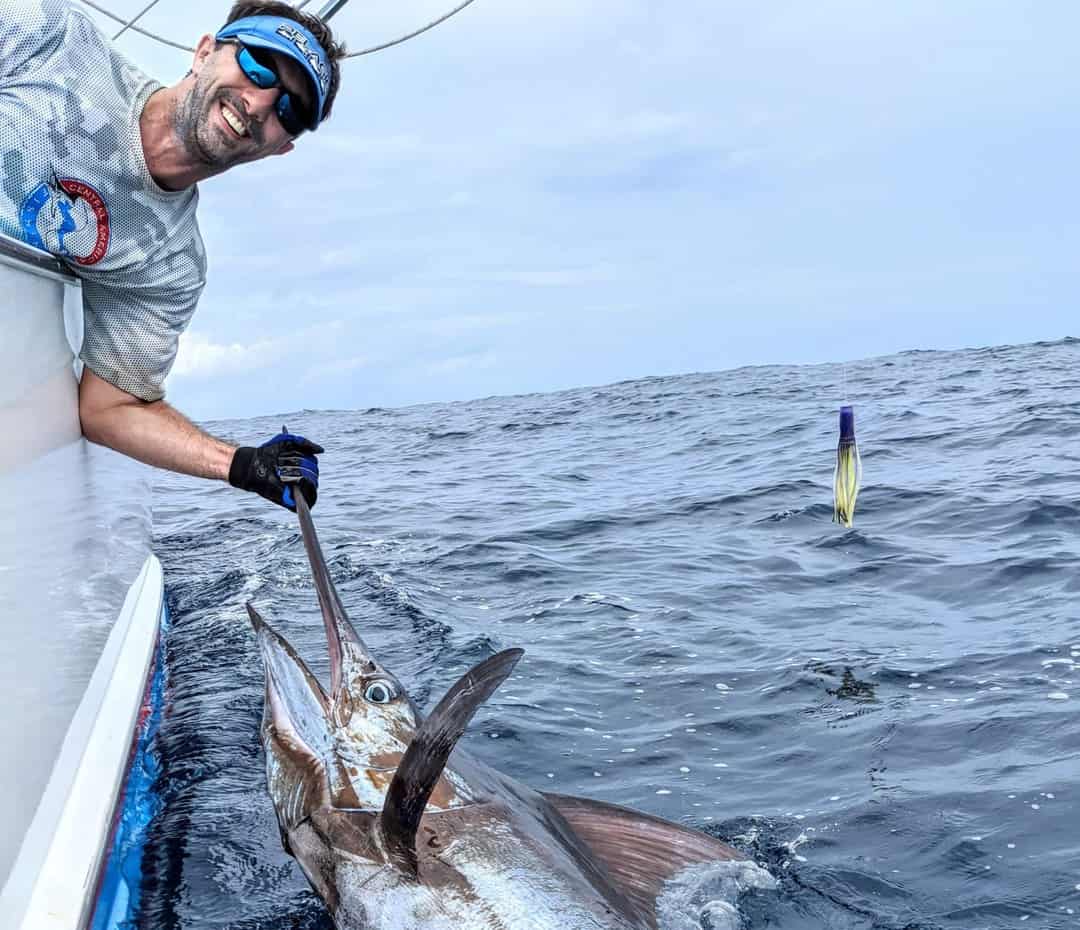If you’re an offshore angler looking for billfish, chances are Central America is either a place you’ve already fished or it’s high on your bucket list. From Mexico to Panama, the warm tropical waters of both the Pacific and Atlantic Oceans teem with these prized pelagic trophies. This small corner of the world is home to marlin hot spots like the Hannibal Bank & Zane Gray Reef in Panama while Guatemala has earned the nickname ‘the sailfish capital of the world‘. Costa Rica is known as ‘the billfish capital of the world‘ thanks to it’s incredible year round action for both sailfish and marlin. Before you jump on a plane, walk the docks, and slather yourself with sun lotion let’s get to know the billfish of Central America.
Where is the Best Billfishing in Central America?
Central America is comprised of seven small countries that together form the thin isthmus connecting North America to South America. From Guatemala down to Panama, Central America measures just 1,100 miles long yet it’s home to some of the best billfishing in the entire world. On any given day black, blue, and striped marlin can swim into your spread and it’s well known that double digit sailfish are a common occurrence in spots like Guatemala and Costa Rica.
The best billfishing in Central America is along the Pacific Coast. This is mainly due to two major ocean currents that collide there: the California Current coming from the north and the Humboldt Current coming from the south. These major ocean currents bring in nutrient rich water that is full of baitfish, and the billfish aren’t far behind. With towering mountain ranges to block seasonal winds, that water tends to stay close to the coastline in certain spots like Guatemala, Panama, and Costa Rica. Underwater geography plays a part in this too as the continental shelf is a short run away and numerous underwater volcanoes and trenches serve as hot spots where bait and billfish congregate.
Billfish certainly roam off the Atlantic Coast of Central America too, but their numbers aren’t as prolific and the weather and sea conditions are much less predictable. When billfishing on the Caribbean Coast of Central America any day with a single billfish is considered a success, but a one-fish day would be considered a disappointment along the Pacific Coast. Better evidence of this is all of the major international billfish tournaments that take place in Central America are held on the Pacific Coast. The fishing in Costa Rica is so good it has hosted the the huge Offshore World Chamionship every year since 2013 out of the new Marina Pez Vela in Quepos. Blue marlin are available on the Atlantic, but black and striped are absent as they are only found in the Indian and Pacific Oceans. In exchange, white marlin are caught in the Caribbean but not in big numbers. The other major difference is that Atlantic Sailfish are much smaller than their cousins on the Pacific Coast, which tend to average 80-100 lbs.
[divi_shortcode id=”282180″]


0 Comments